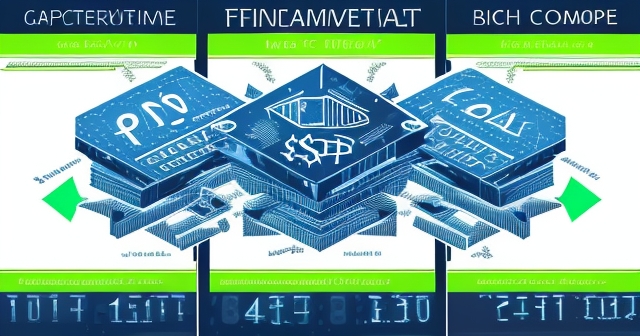
Meta Share Buyback Explained: How $50 Billion Can Change Your Investment Strategy
Table of Contents
ToggleUnpacking Meta Platforms’ Capital Return Strategy: Share Buybacks, Dividends, and What They Mean For You
Welcome to a deep dive into one of the most significant financial maneuvers a company can undertake: returning capital to its shareholders. For us, understanding these actions isn’t just about looking at numbers; it’s about grasping the strategic thinking and future implications for our investments.
Today, we’re focusing on Meta Platforms (NASDAQ:META), a tech giant that recently made headlines not just for its robust financial performance, but for a pivotal shift in its capital allocation strategy. They’ve embraced a powerful combination of substantial share buybacks and, for the very first time, a regular quarterly dividend. What exactly does this signify, and how does it impact you as an investor or aspiring trader?
Let’s embark on this journey together, breaking down the mechanics, motivations, and broader context of Meta’s approach to shareholder returns. We’ll explore the specific figures, compare Meta’s actions to its peers, and consider what this balance between rewarding shareholders and investing in the future tells us about the company’s trajectory.

The financial world took significant note in February 2024 when Meta Platforms announced its fourth-quarter and full-year 2023 results. While the performance itself was strong, a key highlight of the announcement was the authorization of a substantial new share buyback program and, notably, the initiation of a quarterly cash dividend.
Specifically, Meta’s board authorized an additional $50 billion in share repurchases. This figure is significant on its own, representing a massive commitment of capital to reduce the number of outstanding shares. This authorization adds to existing buyback capacity, giving the company ample room to continue executing repurchases over time.
Equally, if not more, impactful was the declaration of Meta’s first-ever quarterly cash dividend of 50 cents per share. While 50 cents might sound modest in absolute terms for a high-flying tech stock, the very act of initiating a dividend marks a fundamental shift for a company that has historically prioritized reinvesting every dollar back into growth initiatives, acquisitions, or its ambitious metaverse vision.
This dual announcement, following strong financial results (which we’ll detail shortly), wasn’t just a press release; it was a powerful signal to the market about Meta’s maturity, financial health, and evolving priorities. But to truly appreciate its weight, we need to understand the tools Meta is using.
The Landmark Announcement: A New Era for Meta Investors
What follows is a structured overview of the recent announcements made by Meta Platforms:
- Meta’s board authorized an additional $50 billion in share buybacks.
- The company announced its first-ever quarterly cash dividend of 50 cents per share.
- This represents a significant pivot in strategy focusing on shareholder returns alongside continued investments in growth.
| Announcement | Details |
|---|---|
| Share Buyback Authorization | $50 billion |
| Quarterly Cash Dividend | 50 cents per share |
Deconstructing Share Buybacks: How They Work and Why They Matter
What exactly happens when a company like Meta “buys back” its own shares? Think of a company’s outstanding shares as pieces of a pie representing ownership. When the company executes a share repurchase, it uses its cash reserves to buy back some of those pieces from the open market. These repurchased shares are typically retired, reducing the total number of slices of the pie available.
The direct, mechanical impact of reducing the number of outstanding shares is often seen in a key metric for investors: Earnings Per Share (EPS). EPS is calculated by dividing a company’s net income (profit) by the number of outstanding shares. If the net income stays the same or grows, but the denominator (outstanding shares) shrinks, the resulting EPS figure will increase. This means each remaining share represents a larger portion of the company’s earnings.
Let’s use a simplified example:
Suppose a company has a net income of $100 million and 100 million shares outstanding. Its EPS is $100M / 100M = $1.00.
Now, imagine the company buys back 10 million shares. The net income remains $100 million, but outstanding shares are now 90 million. The new EPS is $100M / 90M = $1.11 (approximately). See how EPS increased without the company necessarily earning more profit in absolute terms? This is a key attraction of buybacks from a financial engineering perspective.
Share buybacks offer companies significant flexibility. Unlike dividends, which often carry an expectation of consistency or growth, buybacks can be executed opportunistically. A company can ramp up buybacks when its stock price is perceived to be undervalued and slow them down when the price is high or when cash is needed for other purposes.
For investors, buybacks can be a tax-efficient way to receive value compared to dividends, as shareholders are not taxed until they sell their shares at a higher price (hopefully boosted, in part, by the buybacks), whereas dividends are typically taxed upon receipt.

Meta’s Buyback Execution: Actions Speak Louder Than Announcements
Authorization is one thing, but execution is another. Following the significant $50 billion authorization, Meta has demonstrated consistent execution of its buyback strategy. Looking at the figures provided in their financial reports confirms this commitment.
For the full year 2024, Meta reported completing share repurchases totaling a staggering $29.75 billion. This figure highlights the significant capital deployed back into the company’s stock over the course of the year. Breaking it down further, the first quarter of 2024 saw repurchases of $15.01 billion, indicating a strong pace of buyback activity right after the major authorization announcement.
| Year | Repurchases |
|---|---|
| 2024 Full Year | $29.75 billion |
| Q1 2024 | $15.01 billion |
The Rationale Behind Buybacks: Why Companies Choose This Path
Beyond the mechanical EPS boost, companies engage in share buybacks for several strategic reasons. Understanding these helps us interpret Meta’s actions in a broader context.
Here are some primary drivers:
- Returning Excess Cash: When a company generates significant profits and free cash flow beyond what it needs for operational expenses, debt servicing, and promising reinvestment opportunities, it has excess cash. Returning this cash to shareholders is a way to prevent it from sitting idly on the balance sheet. Buybacks are a popular method for this.
- Signaling Confidence: Management often views share buybacks as a powerful signal to the market that they believe the company’s stock is undervalued. By buying shares, the company is essentially saying, “We think our stock is a good investment, perhaps better than anything else we could do with this cash right now.” This can instill confidence in other investors.
- Increasing Shareholder Value: By reducing the number of shares, each remaining share represents a larger piece of the company’s ownership, earnings, and assets. Over time, if the company’s performance remains strong, this reduced share count can contribute to a higher per-share valuation.
- Flexibility: Unlike dividends, which create an expectation of continuation and growth, buybacks are discretionary. Companies can start, stop, or adjust the pace of buybacks based on market conditions, cash availability, or alternative investment opportunities. This provides a cushion that dividends do not.
- Employee Stock Options/Awards: Buybacks can help offset the dilutive effect of shares issued to employees through stock options or restricted stock units. By repurchasing shares, the company can manage the total share count and prevent excessive dilution that could otherwise suppress EPS growth.
For Meta, with its massive cash generation capabilities from its core advertising business, returning excess cash and signaling confidence in its own valuation likely played significant roles in the decision to authorize the $50 billion buyback.

Meta’s First-Ever Dividend: A Signal of Maturity and Stability
While buybacks have been part of Meta’s strategy for some time, the initiation of a quarterly cash dividend was a truly momentous event. Companies that start paying dividends typically signal several key things about their business and financial health:
- Maturity: Initiating a dividend often indicates that a company has reached a stage of stable profitability and predictable cash flow where it can comfortably return a portion of its earnings to shareholders on a regular basis, without hindering essential growth investments. It’s a sign the company is no longer solely in hyper-growth mode requiring every penny for expansion.
- Financial Health and Confidence: Committing to regular dividend payments requires confidence in the sustainability of future earnings and cash flow. A company must believe it can meet this ongoing obligation even during potential economic downturns.
- Attracting a Broader Investor Base: Dividends attract investors seeking income, such as retirees, income funds, and institutional investors with mandates for dividend-paying stocks. This can broaden the appeal of the stock beyond just growth-focused investors.
- Discipline in Capital Allocation: Paying a dividend imposes financial discipline on management. It reduces the amount of free cash flow available for potentially wasteful or low-return projects, encouraging more thoughtful allocation of remaining capital.
| Key Signals of Dividend Initiation |
|---|
| Maturity |
| Financial Health and Confidence |
| Attracting a Broader Investor Base |
| Discipline in Capital Allocation |
Meta’s decision to pay a 50-cent quarterly dividend suggests the company feels confident in its ability to continue generating substantial cash flow from its core Family of Apps business while simultaneously funding its ambitious future projects like AI and the metaverse. It places Meta in a new category of tech giants, differentiating it from peers who only rely on buybacks.
Benchmarking Meta’s Approach Against Tech Peers
To understand the significance of Meta’s move, it’s helpful to compare its capital return strategy to other major players in the technology sector.
- Apple (AAPL) and Microsoft (MSFT): These are the established titans that have long returned capital through both significant share buybacks and growing dividends. They are often seen as benchmarks for mature, highly profitable tech companies demonstrating a commitment to shareholder income and value enhancement. Meta joining the dividend club puts it in this esteemed company.
- Amazon (AMZN) and Alphabet (GOOGL/GOOG): Traditionally, Amazon has not returned capital to shareholders, preferring to reinvest everything into its vast array of businesses and infrastructure. Alphabet, while not paying a dividend, has become a significant executor of share buybacks in recent years, similar to Meta’s long-standing buyback program. Meta’s decision to add a dividend differentiates its strategy from Amazon’s and puts it ahead of Alphabet in terms of direct shareholder income distribution.

Meta’s new approach signals a strategic evolution. It’s no longer operating solely with the mindset of a company in its early explosive growth phase, where every dollar is plowed back in. While still heavily investing, the introduction of a dividend, alongside massive buybacks, indicates a balance—acknowledging its current profitability and cash flow generation while still pursuing future opportunities. This positions Meta as potentially appealing to a wider range of investors than before.
The Financial Muscle Powering Meta’s Returns
None of these capital return programs would be sustainable without a foundation of strong financial performance. Meta’s recent results provide the crucial context for understanding *why* they are able to make these moves.
As highlighted by the financial data referenced, Meta delivered exceptional results, particularly in fiscal year 2024. The company reported significant revenue growth, with increases around 21-22% year-over-year. More impressively, net income and Earnings Per Share (EPS) saw even more dramatic increases, surging by approximately 49-59% year-over-year in FY 2024. These figures demonstrate robust profitability and strong operational leverage.
This surge in profitability translates directly into substantial free cash flow—the cash a company has left after accounting for operating expenses and capital expenditures. It is this free cash flow that fuels share buybacks and dividend payments. Meta’s ability to generate tens of billions of dollars in free cash flow annually provides the necessary financial muscle to fund both the large buyback programs and the newly initiated dividend without jeopardizing its operational health or future investment plans.
| Financial Metric | Performance FY 2024 |
|---|---|
| Revenue Growth | 21-22% YoY |
| Net Income Growth | 49-59% YoY |
Understanding these underlying financial fundamentals is key. The capital return program isn’t a sign of distress or lack of ideas; it’s a reflection of a highly profitable business operating efficiently and generating cash well beyond its immediate reinvestment needs (though those needs are significant, as we’ll discuss).
Balancing Present Returns with Future Vision: AI and Capital Expenditures
A potential criticism of large share buybacks is that they might signal a lack of attractive reinvestment opportunities within the business. However, Meta’s strategy seems to actively counter this narrative by simultaneously outlining massive future investment plans.
Meta’s management, specifically their CFO, provided clear guidance regarding future capital expenditures, particularly for fiscal year 2025. The outlook projects substantial investments in infrastructure and generative AI capabilities. The projected range for capital expenditures in 2025 is a staggering $60-65 billion. This figure represents a significant increase and highlights where a substantial portion of Meta’s future cash flow will be directed.

These investments are crucial for Meta’s long-term strategy. The race in artificial intelligence requires immense computing power and sophisticated infrastructure. Meta is heavily invested in developing generative AI technologies that can enhance its existing products (like advertising targeting and content ranking) and power future innovations (potentially in the metaverse or new applications). The projected capital expenditure reflects the cost of building the necessary data centers, acquiring the specialized chips (GPUs), and funding the R&D for these advanced AI initiatives.
Therefore, Meta is not simply returning cash because it has nowhere else to put it. It is balancing a commitment to shareholder value *today* through buybacks and dividends with a commitment to investing heavily in the technologies that are expected to drive growth and profitability *tomorrow*. This dual focus suggests a mature capital allocation strategy aimed at both rewarding current shareholders and building a strong foundation for future success.
Potential Criticisms and Considerations Regarding Capital Returns
While share buybacks and dividends are generally viewed positively by investors, it’s important to consider some potential criticisms or nuances associated with these strategies.
Regarding share buybacks, critics sometimes argue that:
- They can be used to artificially inflate EPS or stock price metrics in the short term, potentially masking underlying issues if revenue or net income growth is slowing.
- They might indicate that management lacks vision or attractive opportunities to reinvest capital back into the business for higher long-term returns.
- If financed by debt, buybacks can weaken a company’s balance sheet, although Meta’s buybacks are primarily funded by its massive free cash flow.
Regarding dividends, while generally positive, the main consideration is the commitment they create. Once a company starts paying a dividend, there is market expectation that it will be maintained or increased. Cutting or suspending a dividend can be viewed very negatively by investors, suggesting financial distress. This reduces the financial flexibility that buybacks offer.
In Meta’s case, the strong underlying financial growth (as discussed earlier) helps counter the “lack of opportunities” criticism for now. The significant projected capital expenditures in AI also reinforce the idea that Meta is not neglecting future investment. However, investors should always monitor whether growth capital is being allocated effectively and whether the capital return programs remain sustainable without overleveraging the company.
Navigating the External Environment: Regulatory Landscape
As we consider Meta’s financial strategy, it’s also crucial to acknowledge the external environment in which it operates. The provided information mentions that the company continues to face potential impacts from the active legal and regulatory landscape in key markets, notably the EU and the U.S.
Regulatory pressures can manifest in various ways:
- Antitrust Investigations: Potential challenges to acquisitions or core business practices.
- Data Privacy Regulations: Increased costs or limitations on data utilization critical for advertising.
- Content Moderation Liabilities: Costs and risks associated with managing content on their platforms.
- Platform Regulations: Potential requirements to change how their platforms operate or interact with third parties.

These external factors, while not directly tied to the mechanics of buybacks or dividends, can influence Meta’s future profitability and cash flow generation. A significant regulatory setback could potentially impact the company’s ability to sustain the current level of capital returns or fund future investments. Savvy investors keep an eye on this landscape as a potential risk factor alongside the financial metrics.
Conclusion: A Strategic Pivot for Shareholder Value
Meta Platforms’ recent moves—the authorization of a massive $50 billion share buyback program and the initiation of its first-ever quarterly cash dividend—represent a pivotal moment in the company’s financial history and its relationship with shareholders.
These actions, underpinned by Meta’s exceptional financial performance in fiscal year 2024 with robust revenue and profit growth, signal a strategic shift. Meta is balancing its continued commitment to investing heavily in future technologies like AI and infrastructure with a clear and substantial commitment to returning capital directly to its shareholders.
For you, the investor or aspiring trader, this means Meta is evolving. It’s adopting characteristics seen in more mature, cash-generating tech leaders like Apple and Microsoft, offering a blend of growth potential (driven by future tech investments) and direct shareholder value (through buybacks and dividends). Understanding the mechanisms of buybacks, the significance of a dividend initiation, and the financial strength that supports them is crucial for evaluating Meta as a potential investment.
While the regulatory environment remains a factor to monitor, Meta’s current capital allocation strategy, combining aggressive buybacks with a new dividend, positions it as an interesting case study in how large, profitable tech companies manage their vast resources to reward shareholders while still investing for the future. It’s a complex picture, but by breaking it down, we gain a clearer view of the forces shaping one of the world’s largest companies.
meta share buybackFAQ
Q:What is a share buyback?
A:A share buyback is when a company purchases its own shares from the open market to reduce the number of outstanding shares.
Q:Why did Meta announce a quarterly dividend?
A:Meta initiated a quarterly dividend to signal financial maturity and confidence in sustaining future earnings while rewarding shareholders.
Q:How do share buybacks affect stock prices?
A:Share buybacks can increase stock prices by reducing the number of shares available, which often leads to higher Earnings Per Share (EPS) and perceived value.
You may also like
Calendar
| 一 | 二 | 三 | 四 | 五 | 六 | 日 |
|---|---|---|---|---|---|---|
| 1 | 2 | 3 | 4 | 5 | 6 | 7 |
| 8 | 9 | 10 | 11 | 12 | 13 | 14 |
| 15 | 16 | 17 | 18 | 19 | 20 | 21 |
| 22 | 23 | 24 | 25 | 26 | 27 | 28 |
| 29 | 30 | 31 | ||||
發佈留言
很抱歉,必須登入網站才能發佈留言。